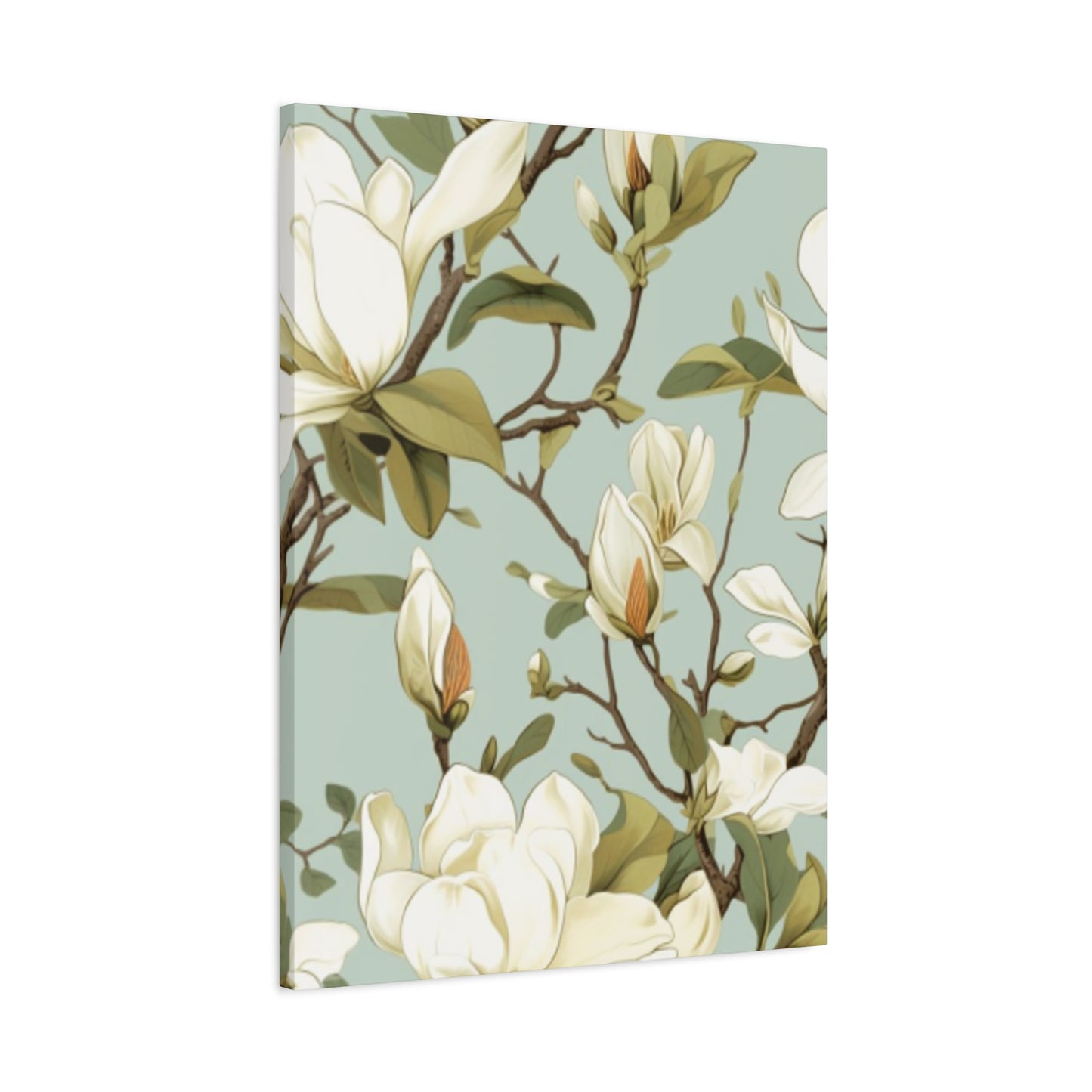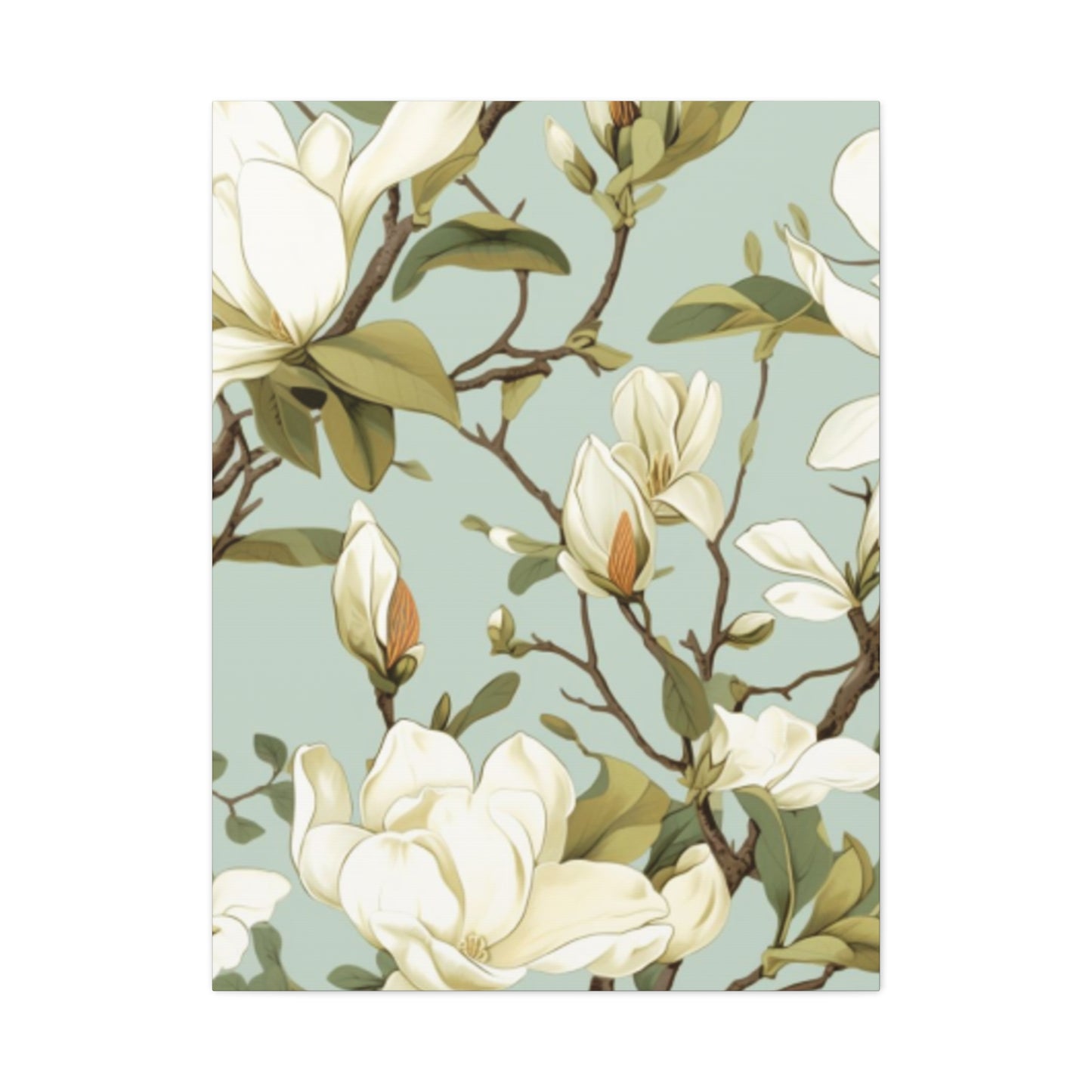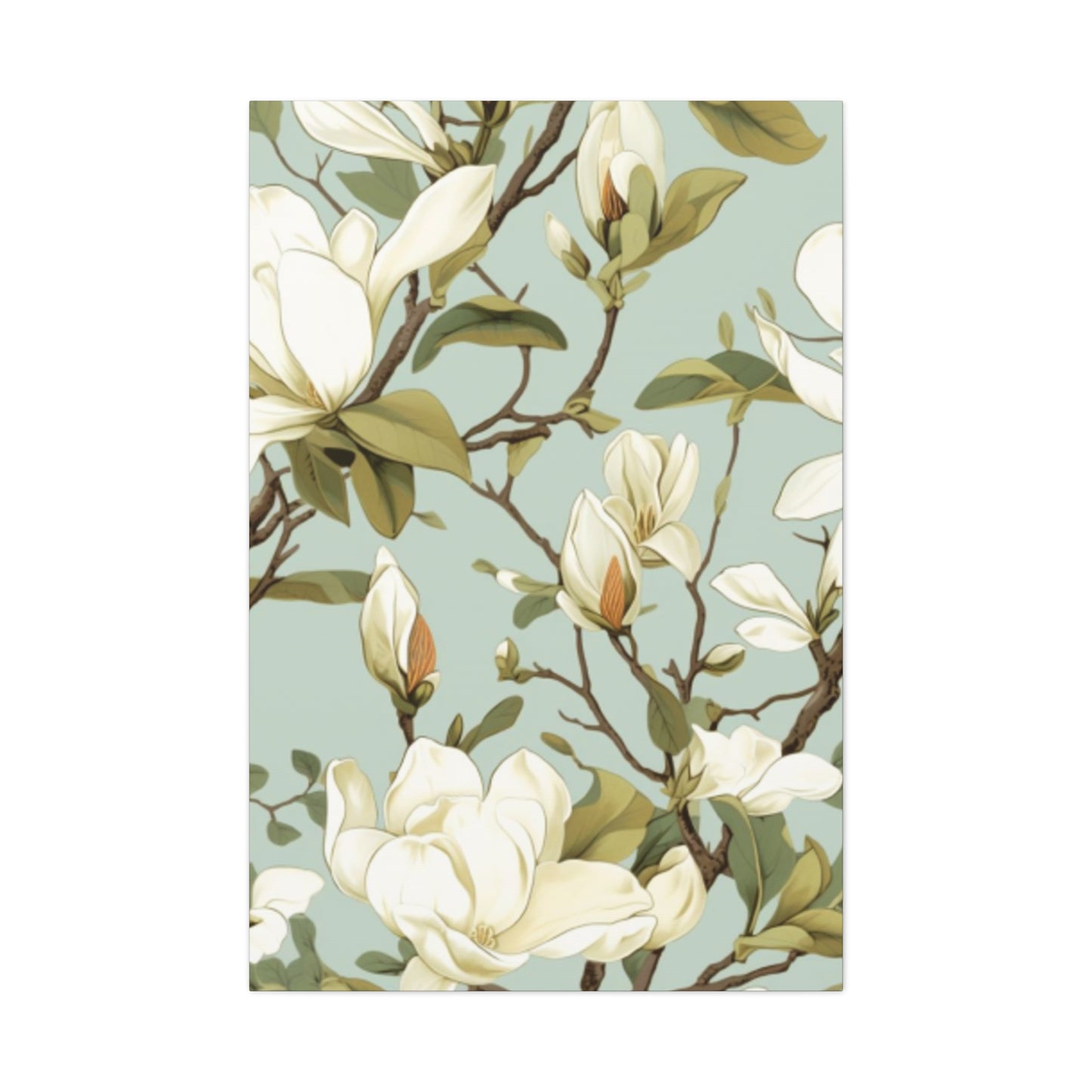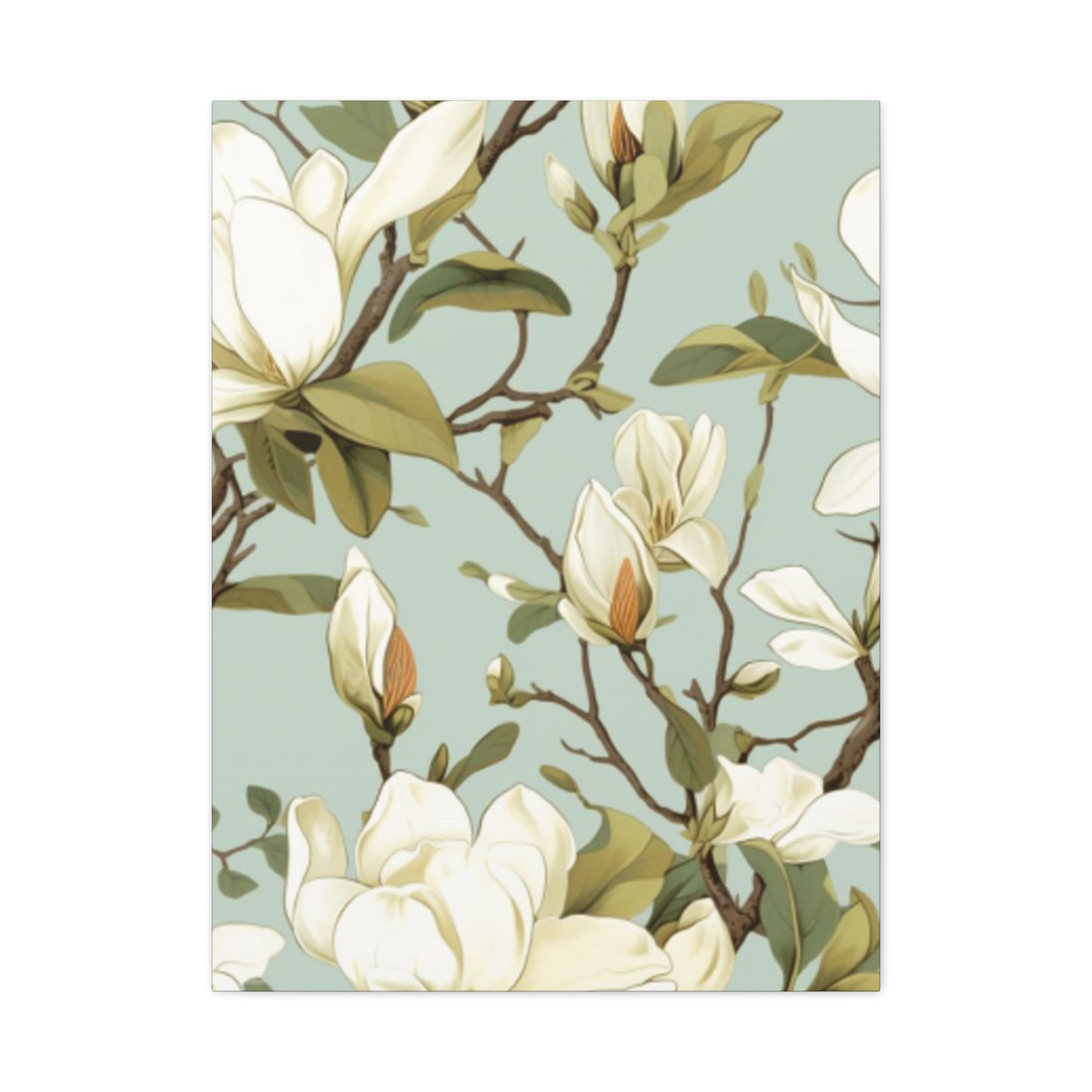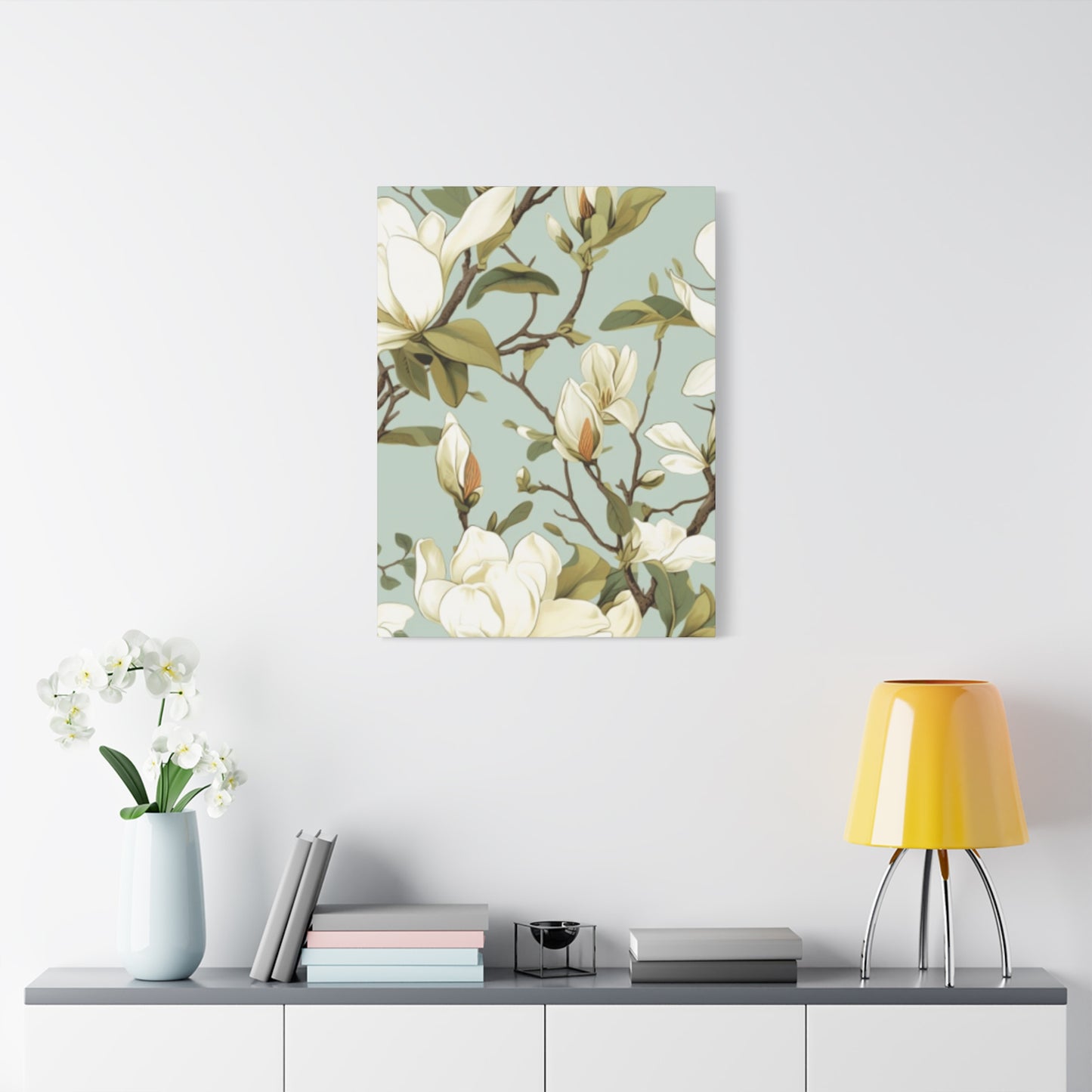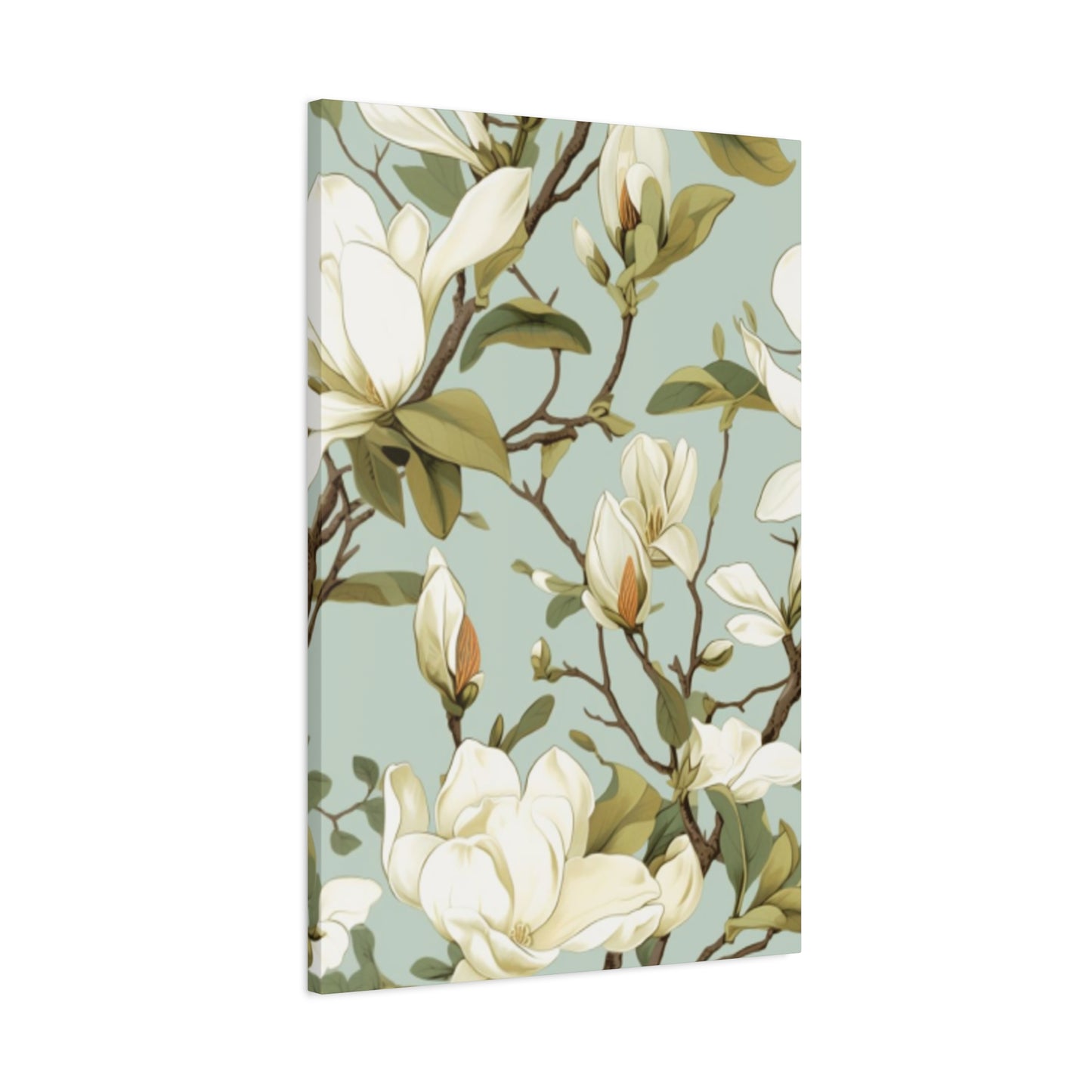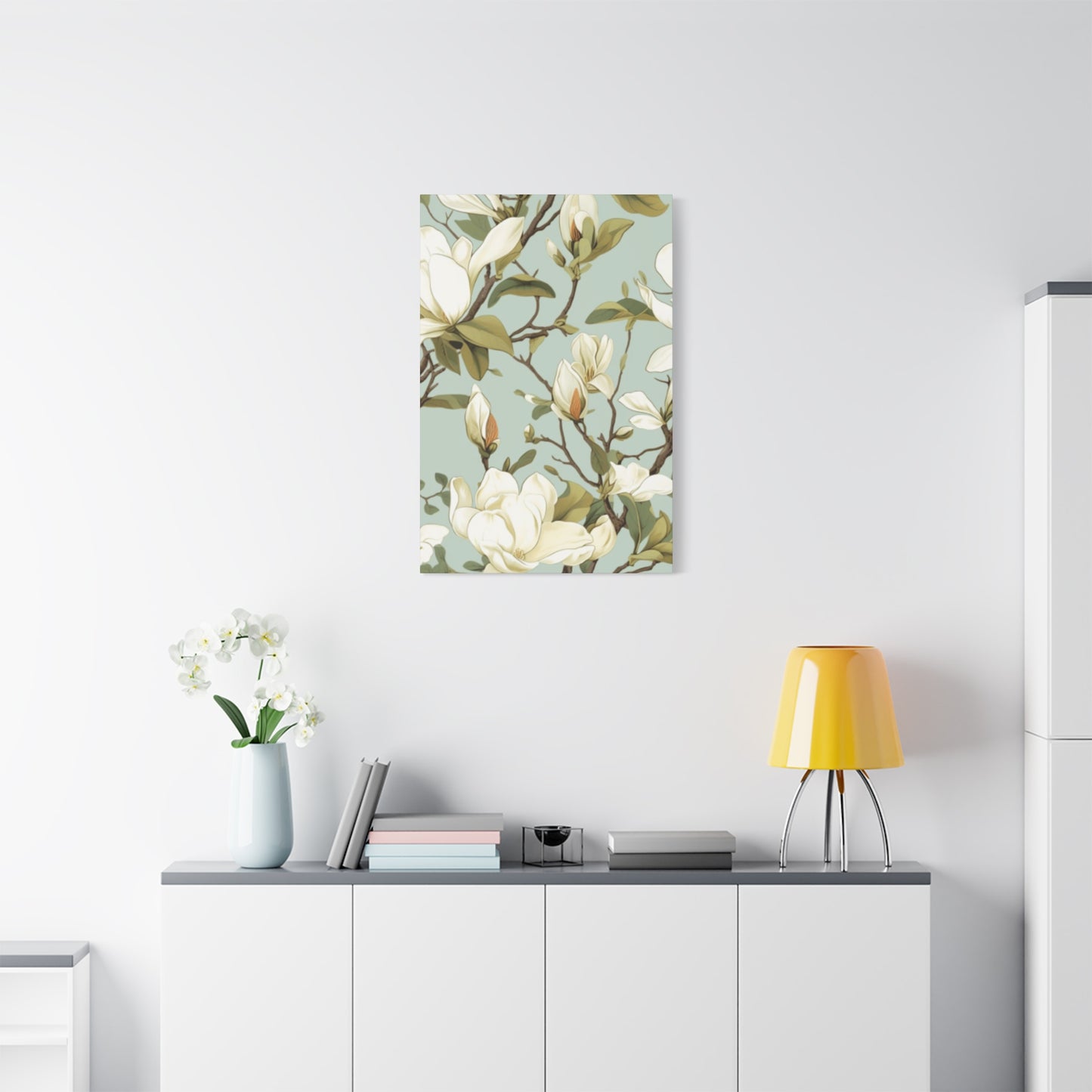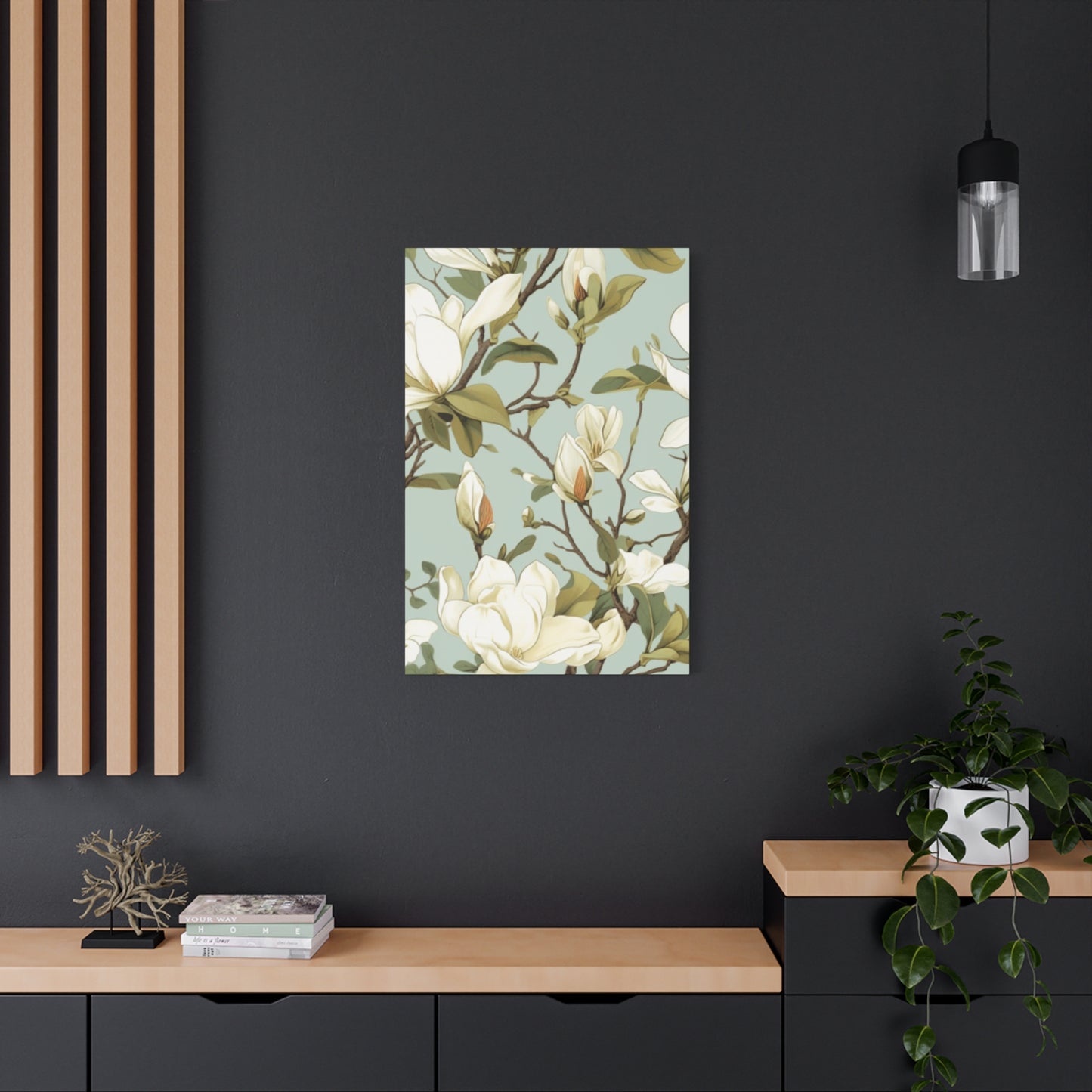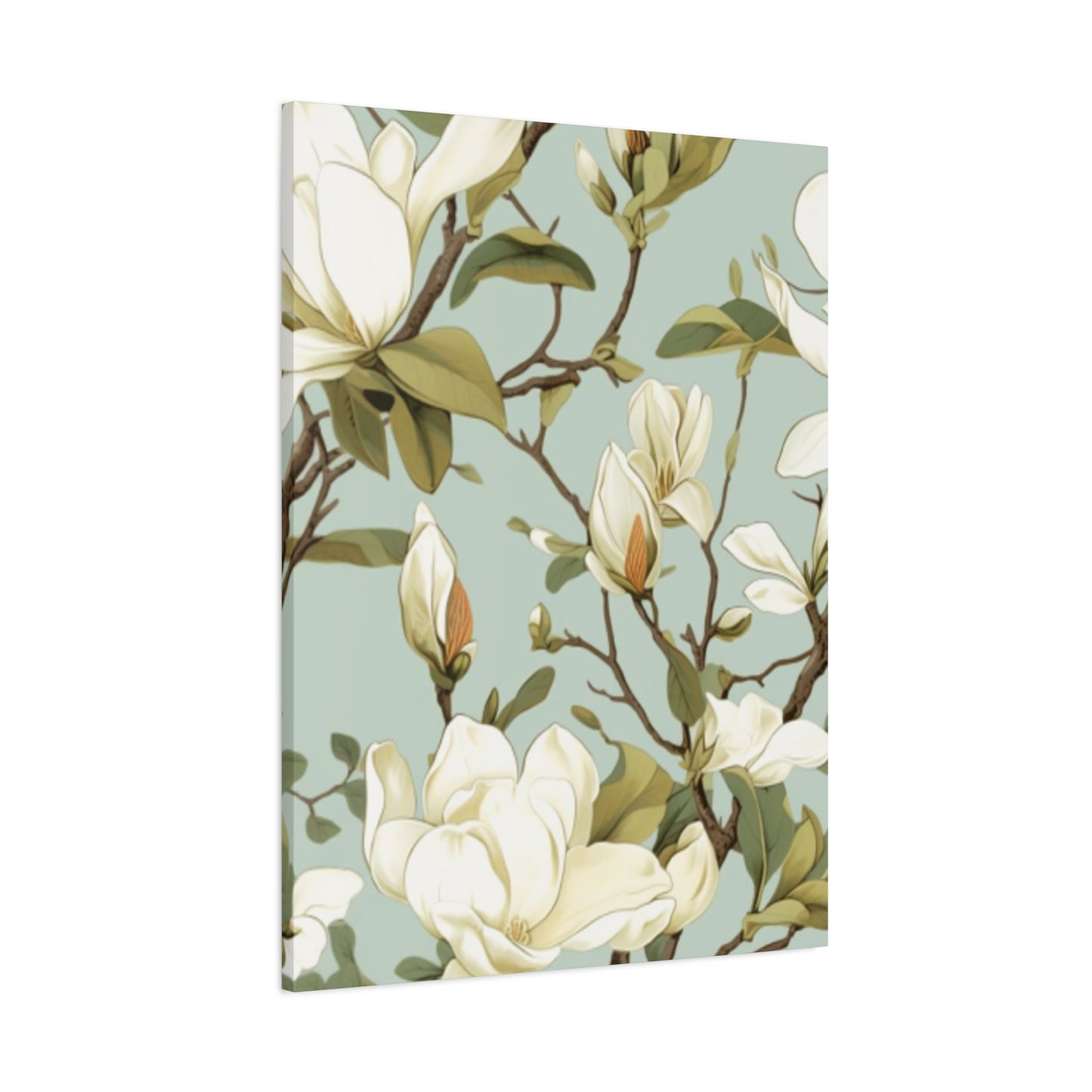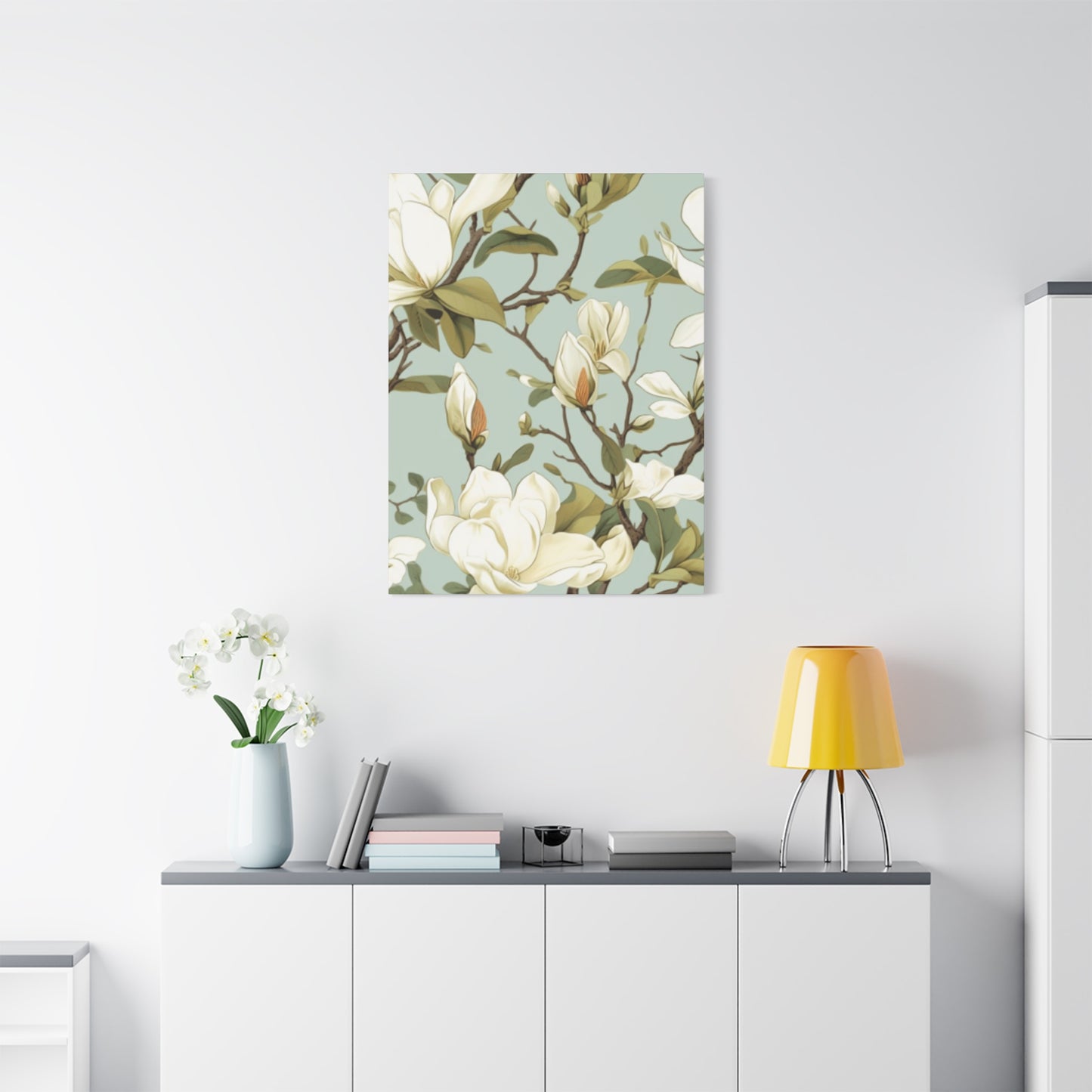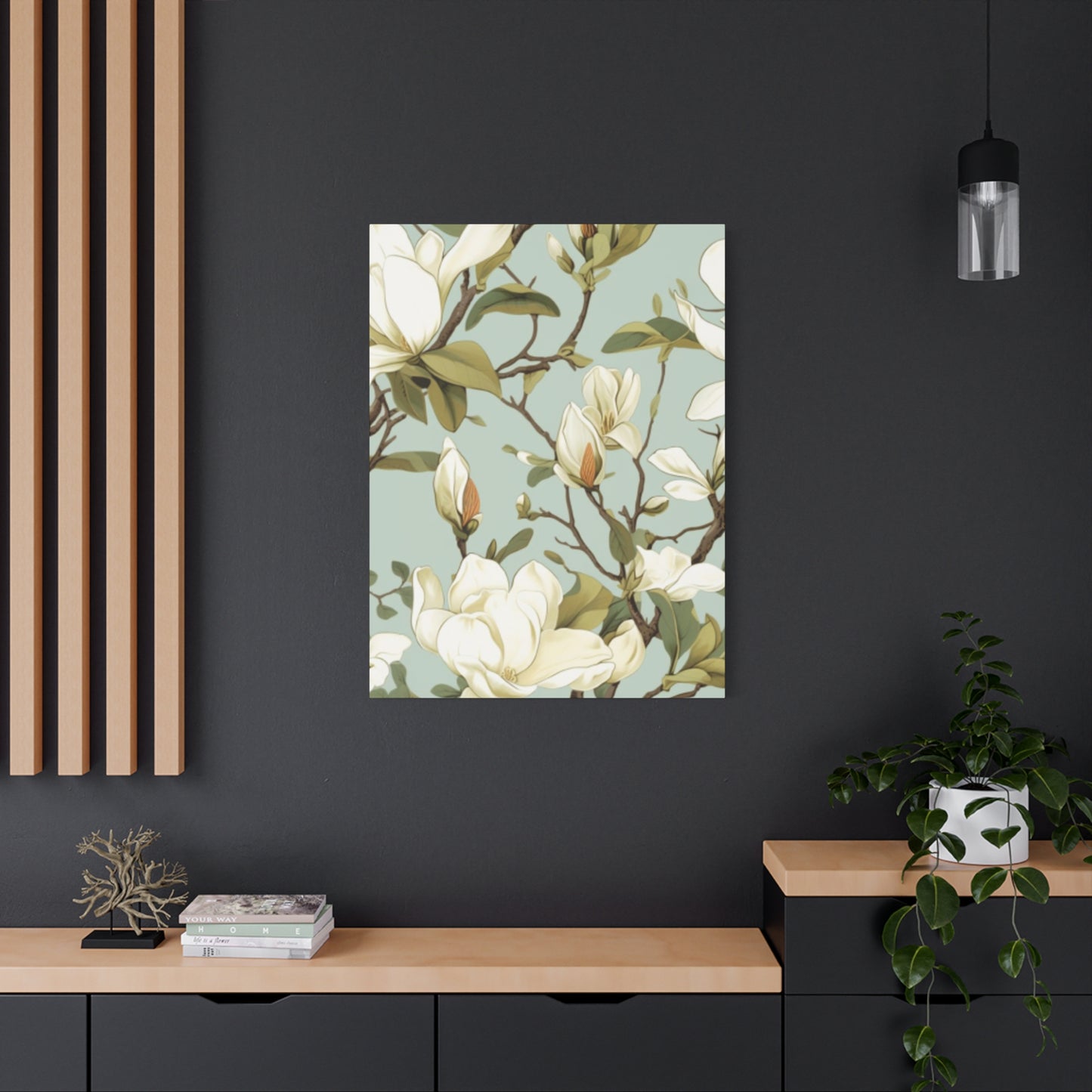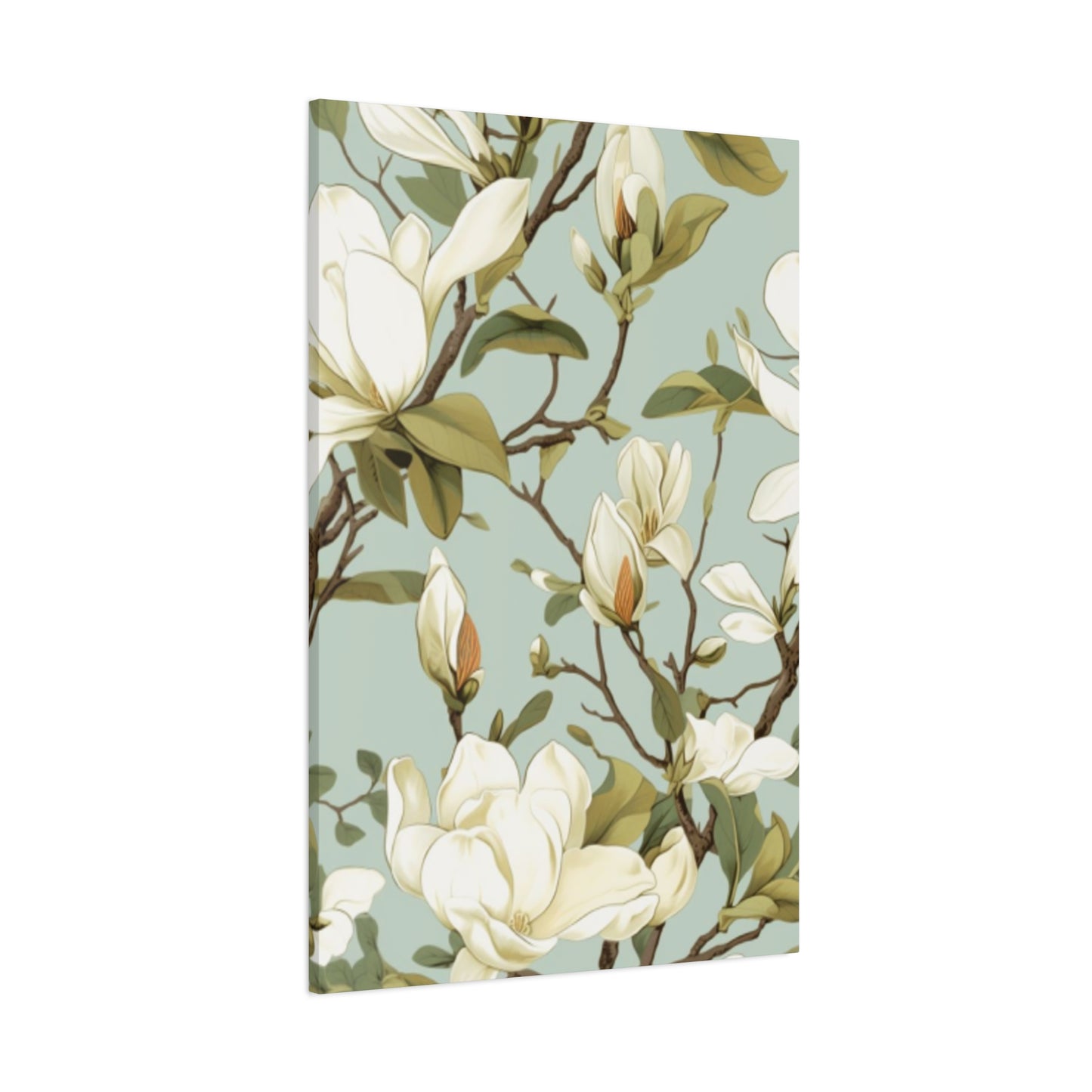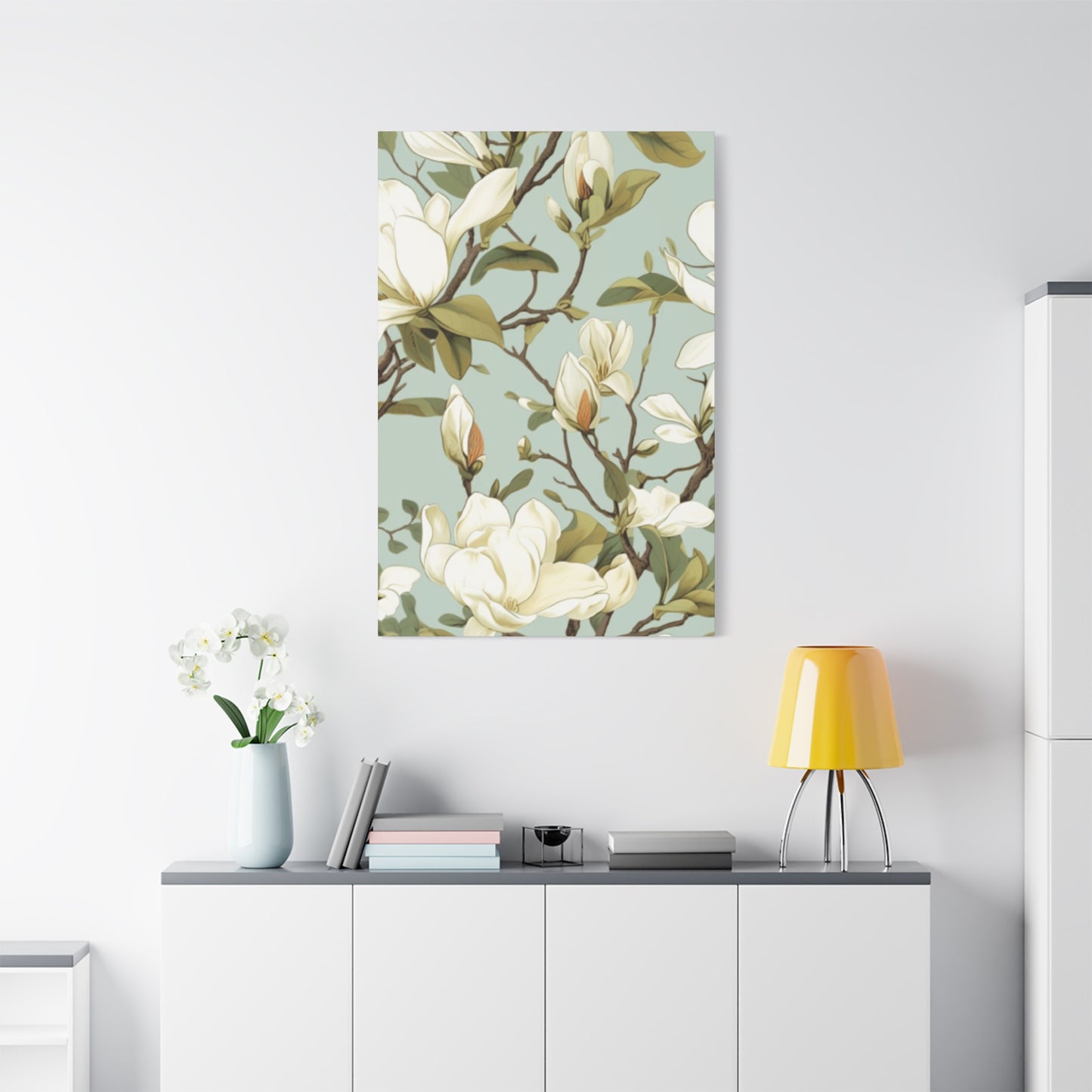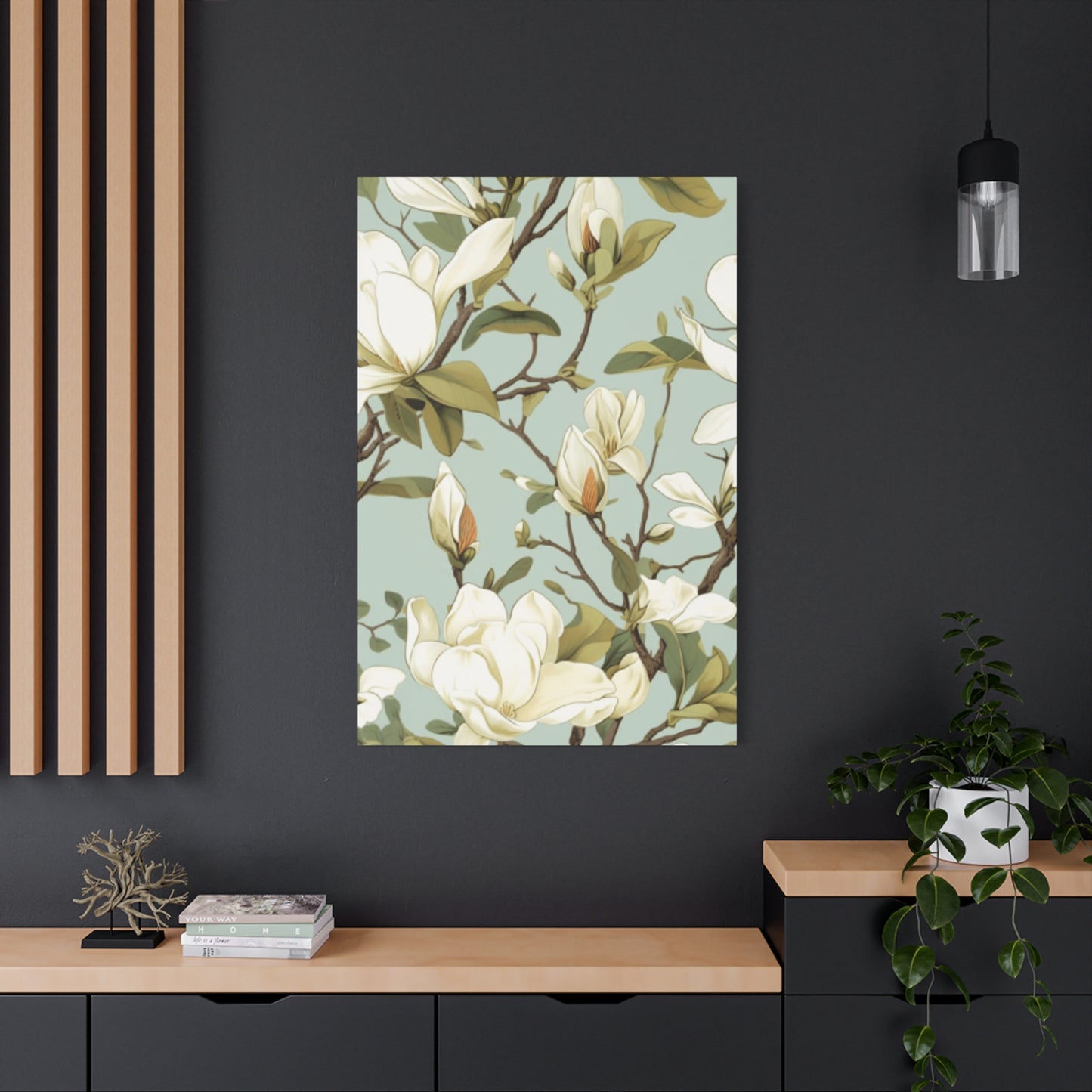Magnolia Baby Flower Plant Wall Art: Creating Enchanting Nursery Spaces with Botanical Elegance
Creating a serene and beautiful environment for your baby starts with selecting the perfect wall art that captures both elegance and innocence. Magnolia baby flower plant wall art has emerged as one of the most sought-after decorative elements for modern nurseries, offering a perfect blend of natural beauty and sophisticated charm. These stunning botanical artworks bring the timeless appeal of magnolia blossoms into your child's space, creating an atmosphere of tranquility and wonder that supports healthy development and peaceful sleep.
The popularity of magnolia-themed nursery decor stems from the flower's symbolic meaning and visual appeal. Magnolias represent purity, nobility, and perseverance, making them ideal choices for celebrating new life and the beginning of a beautiful journey. The soft, delicate petals and gentle colors of magnolia blooms create a soothing visual experience that complements various design styles, from contemporary minimalism to classic traditional aesthetics.
When selecting magnolia baby flower plant wall art, parents have numerous options to explore, including watercolor paintings, digital prints, hand-drawn illustrations, and mixed-media compositions. Each style offers unique characteristics that can enhance different aspects of your nursery design. The versatility of magnolia imagery allows for creative interpretation while maintaining the essential elements that make these flowers so captivating and appropriate for baby spaces.
Modern parents increasingly recognize the importance of surrounding their children with beautiful, inspiring imagery from the earliest stages of development. Magnolia baby flower plant wall art provides visual stimulation that supports cognitive development while creating a calming environment conducive to rest and relaxation. The organic shapes and gentle colors of magnolia blooms offer the perfect balance between visual interest and serenity, making them ideal for nursery environments where both stimulation and tranquility are essential.
The growing trend toward natural and botanical themes in interior design has made magnolia baby flower plant wall art particularly relevant for contemporary homes. These artworks seamlessly integrate with other natural elements commonly found in modern nurseries, such as wooden furniture, organic textiles, and live plants. The result is a cohesive design scheme that celebrates nature's beauty while providing a nurturing environment for your growing child.
Historical Significance and Cultural Symbolism of Magnolia Flowers
The rich history and cultural significance of magnolia flowers add depth and meaning to their use in baby flower plant wall art. These magnificent blooms have captured human imagination for centuries, appearing in art, literature, and cultural traditions across different civilizations. Understanding the historical context and symbolic meaning of magnolias enhances appreciation for their presence in nursery decoration and adds layers of significance to your choice of wall art.
Magnolia trees are among the most ancient flowering plants on Earth, with fossil evidence suggesting their existence for over 95 million years. This incredible longevity has contributed to their symbolic association with endurance, strength, and the continuation of life through generations. When parents choose magnolia baby flower plant wall art for their nursery, they connect their child to this ancient lineage of beauty and resilience, creating a meaningful foundation for their decorative choices.
In Chinese culture, magnolias hold special significance as symbols of feminine beauty, gentleness, and purity. Traditional Chinese artists frequently depicted magnolia blossoms in their paintings, associating them with noble character and refined taste. This cultural heritage makes magnolia baby flower plant wall art particularly meaningful for families who appreciate Asian artistic traditions or wish to incorporate multicultural elements into their nursery design.
Southern American culture has embraced magnolia flowers as symbols of hospitality, grace, and Southern charm. The magnolia's association with warmth, welcome, and family values makes it an excellent choice for nursery wall art, as these qualities align perfectly with the loving environment parents wish to create for their children. The flower's connection to Southern traditions of family, community, and gracious living adds emotional resonance to magnolia-themed nursery decor.
Victorian flower language assigned specific meanings to different blooms, and magnolias were associated with love of nature, nobility, and perseverance through difficulties. These symbolic meanings make magnolia baby flower plant wall art particularly appropriate for celebrating new life and expressing hopes for a child's future character development. The Victorian tradition of using flowers to convey deep emotions and wishes adds romantic and sentimental value to magnolia-themed nursery art.
Religious and spiritual traditions have also embraced magnolia symbolism, often associating these flowers with purity, spirituality, and divine feminine energy. Many cultures view magnolias as representations of the soul's journey toward enlightenment and spiritual growth. For families who value spiritual symbolism in their decorative choices, magnolia baby flower plant wall art offers a meaningful way to incorporate these deeper meanings into their child's environment.
The magnolia's association with spring, renewal, and new beginnings makes it particularly relevant for nursery decoration. These flowers typically bloom early in the spring season, symbolizing fresh starts, hope, and the promise of beautiful things to come. This timing creates a natural connection between magnolia imagery and the arrival of a new baby, making magnolia baby flower plant wall art a thoughtful and symbolically appropriate choice for welcoming new life into the world.
Aesthetic Benefits of Botanical Wall Art in Nurseries
The inclusion of botanical elements in nursery design offers numerous aesthetic benefits that contribute to creating beautiful, harmonious spaces for babies and young children. Magnolia baby flower plant wall art exemplifies these advantages by bringing natural beauty, organic forms, and soothing colors into interior environments. Understanding these aesthetic benefits helps parents make informed decisions about incorporating botanical wall art into their nursery design schemes.
Natural elements in interior design create visual connections to the outdoor world, helping to establish a sense of harmony and balance within enclosed spaces. Magnolia baby flower plant wall art serves as a window to nature, bringing the beauty of gardens and natural landscapes into the nursery environment. This connection to nature has been shown to have positive psychological effects, promoting feelings of calm, well-being, and connection to the broader natural world.
The organic shapes and flowing lines characteristic of magnolia blossoms provide visual contrast to the geometric forms typically found in furniture and architectural elements. This interplay between organic and geometric shapes creates dynamic visual interest while maintaining overall harmony in the space. Magnolia baby flower plant wall art introduces these natural curves and flowing forms, softening the hard edges of cribs, changing tables, and other nursery furniture.
Color psychology plays a crucial role in nursery design, and magnolia baby flower plant wall art offers a palette of gentle, soothing hues that support peaceful sleep and emotional well-being. The soft whites, pale pinks, and gentle creams typically associated with magnolia blossoms create a calming atmosphere that reduces visual stimulation while maintaining aesthetic appeal. These colors also serve as excellent neutral bases that complement a wide range of other decorative elements.
The layering of visual elements creates depth and dimension in nursery spaces, and botanical wall art contributes significantly to this effect. Magnolia baby flower plant wall art can feature multiple layers of petals, leaves, and branches that create visual depth and interest without overwhelming the space. This layering effect helps prevent walls from appearing flat or monotonous while maintaining the serene atmosphere essential for nursery environments.
Texture variation adds tactile interest to visual compositions, and botanical wall art often incorporates different textural elements that enhance overall aesthetic appeal. Whether created through watercolor techniques, digital manipulation, or mixed media approaches, magnolia baby flower plant wall art can introduce subtle textural variations that engage the eye and create sophisticated visual experiences appropriate for both children and adults who spend time in the nursery.
The scale and proportion of botanical elements in wall art can be adjusted to complement different nursery sizes and layouts. Large-scale magnolia blooms can create dramatic focal points in spacious nurseries, while smaller, more delicate compositions work beautifully in intimate spaces. This scalability makes magnolia baby flower plant wall art suitable for various room configurations and helps ensure that botanical elements enhance rather than overwhelm the overall design scheme.
Botanical wall art provides opportunities for creating visual rhythms and patterns that guide the eye through the space in pleasing ways. Repeated magnolia motifs, whether through multiple pieces of art or through patterns within individual artworks, can establish visual continuity that unifies the nursery design. These rhythmic elements create a sense of order and harmony that contributes to the overall aesthetic success of the space.
Design Styles and Artistic Approaches for Magnolia Nursery Art
The versatility of magnolia imagery allows for exploration of various design styles and artistic approaches, each offering unique aesthetic qualities and emotional impacts. Understanding different artistic interpretations of magnolia baby flower plant wall art helps parents select pieces that align with their personal taste, nursery design goals, and desired atmospheric effects. This diversity ensures that magnolia-themed wall art can successfully complement any nursery style, from ultra-modern to traditionally classic.
Watercolor magnolia baby flower plant wall art represents one of the most popular and versatile artistic approaches for nursery decoration. The fluid, translucent qualities of watercolor media perfectly capture the delicate nature of magnolia petals, creating soft, dreamy effects that enhance the peaceful atmosphere essential for baby spaces. Watercolor techniques allow for subtle color gradations and gentle blending that mirror the natural variations found in real magnolia blooms.
The impressionistic qualities of watercolor magnolia art create a sense of movement and life that brings energy to nursery walls without creating overstimulation. Watercolor artists can employ various techniques such as wet-on-wet blending, dry brush effects, and color lifting to create different textural qualities within the same composition. These varied approaches allow for rich, complex artworks that reward closer inspection while maintaining overall simplicity and elegance.
Digital art approaches to magnolia baby flower plant wall art offer contemporary interpretations that appeal to modern parents seeking cutting-edge aesthetic solutions. Digital artists can manipulate color, form, and composition with precision while maintaining the organic essence of magnolia flowers. This medium allows for experimentation with color palettes that might be difficult to achieve through traditional media, opening possibilities for customized color schemes that perfectly match nursery design elements.
Vector-based digital magnolia art creates clean, crisp lines and solid color areas that complement minimalist and contemporary nursery designs. This approach emphasizes the essential forms and shapes of magnolia flowers while eliminating unnecessary detail that might create visual clutter. Vector art can be easily scaled to any size without losing quality, making it ideal for large wall installations or small accent pieces.
Hand-drawn magnolia baby flower plant wall art offers authentic, artisanal qualities that appeal to parents who value handcrafted elements in their nursery design. Pencil drawings, pen and ink illustrations, and charcoal renderings each provide different aesthetic qualities and emotional impacts. Hand-drawn art carries the subtle imperfections and personal touches that make each piece unique and contribute to the overall warmth and humanity of the nursery environment.
Realistic botanical illustration approaches to magnolia art provide educational value while maintaining aesthetic appeal. These scientifically accurate representations help children develop appreciation for natural forms and details while providing beautiful wall decoration. Realistic illustrations can include detailed depictions of magnolia flower anatomy, showing stamens, pistils, and petal structures that introduce children to botanical concepts in age-appropriate ways.
Abstract interpretations of magnolia baby flower plant wall art allow for creative exploration of color, form, and composition while maintaining essential floral elements. Abstract approaches can emphasize particular aspects of magnolia flowers such as petal curves, color relationships, or overall compositional balance. These interpretations often work particularly well in contemporary nursery settings where artistic innovation and creative expression are valued.
Mixed media approaches combine different artistic techniques and materials to create rich, textured magnolia art pieces. Artists might combine watercolor backgrounds with ink details, incorporate collage elements, or add dimensional components that create tactile interest. Mixed media magnolia baby flower plant wall art offers unique aesthetic qualities that cannot be achieved through single-medium approaches, creating one-of-a-kind pieces that serve as conversation starters and focal points.
Photographic approaches to magnolia wall art capture the natural beauty of real flowers with stunning clarity and detail. High-quality floral photography can reveal intricate details and color variations that might be missed in other artistic approaches. Photographic magnolia art works particularly well when stylized through various processing techniques that enhance artistic qualities while maintaining photographic authenticity.
Palette Selection for Baby Spaces
The careful selection of colors in nursery environments plays a crucial role in supporting infant development, promoting peaceful sleep, and creating emotionally supportive spaces for both babies and caregivers. Magnolia baby flower plant wall art offers opportunities to incorporate psychologically beneficial color palettes that enhance the overall nursery environment. Understanding color psychology helps parents make informed decisions about which magnolia art pieces will best serve their nursery design goals and their baby's developmental needs.
Soft, muted colors typically associated with magnolia blossoms provide ideal foundations for nursery color schemes because they offer visual interest without creating overstimulation. The gentle whites, pale pinks, and cream tones commonly found in magnolia baby flower plant wall art create calming atmospheres that support relaxation and peaceful sleep. These colors reflect light softly, preventing harsh contrasts that might disturb sensitive infant vision while maintaining sufficient visual appeal for older children and adults.
White and off-white tones in magnolia art symbolize purity, innocence, and new beginnings, making them particularly appropriate for baby spaces. These colors also serve as excellent neutral bases that allow other decorative elements to shine while maintaining overall harmony in the design scheme. White magnolia petals in wall art can help brighten darker nurseries and create feelings of spaciousness and cleanliness that contribute to positive psychological atmospheres.
Pale pink shades often found in magnolia blossoms offer gentle warmth without the intensity of stronger pink tones that might become overwhelming in baby environments. These subtle pink hues can work successfully in nurseries designed for children of any gender, as they remain soft and understated rather than boldly feminine. Pink magnolia art can complement both cool and warm color schemes, making it versatile for various nursery design approaches.
Soft green tones representing magnolia leaves and stems provide connection to nature and promote feelings of growth, renewal, and harmony. Green is considered one of the most psychologically restful colors, making it excellent for nursery applications where calm, peaceful atmospheres are essential. Green elements in magnolia baby flower plant wall art can help balance warmer flower tones while adding natural authenticity to the overall composition.
Cream and ivory tones offer warmth and sophistication while maintaining the gentle qualities essential for baby spaces. These colors work particularly well in traditional and classic nursery designs, providing timeless appeal that grows with the child. Cream-toned magnolia art coordinates beautifully with wooden furniture and natural textile choices commonly found in contemporary nursery designs.
The psychology of color temperature plays important roles in nursery design, and magnolia art typically features cool to neutral color temperatures that promote relaxation and tranquility. Cool colors tend to recede visually, making spaces feel larger and more open, which can be beneficial in smaller nurseries. The predominantly cool palette of magnolia baby flower plant wall art creates restful environments that support healthy sleep patterns and emotional well-being.
Color saturation levels in magnolia art should be carefully considered for nursery applications, with lower saturation levels generally proving more appropriate for baby spaces. Highly saturated colors can create visual excitement that might interfere with sleep and relaxation, while desaturated tones provide gentle stimulation that supports development without causing overstimulation. Most effective magnolia baby flower plant wall art features moderate to low color saturation that maintains visual interest while promoting calm atmospheres.
Monochromatic color schemes using various shades and tints of single colors can create sophisticated, harmonious effects in magnolia wall art. Monochromatic approaches eliminate color conflicts and create unified visual experiences that feel restful and coordinated. Single-color magnolia art can serve as elegant focal points that complement rather than compete with other nursery elements.
Analogous color schemes using colors adjacent to each other on the color wheel create harmonious relationships that feel natural and pleasing. Magnolia baby flower plant wall art often naturally incorporates analogous schemes through combinations of whites, pale pinks, and soft greens. These color relationships mirror those found in nature, creating authentic and psychologically comfortable visual experiences.
Complementary color accents can be used sparingly in magnolia art to create visual interest without overwhelming baby-sensitive environments. Small touches of complementary colors can add sophistication and depth to magnolia compositions while maintaining overall harmony. These accent colors should be used judiciously and in muted tones to maintain the peaceful qualities essential for nursery spaces.
Material Choices and Print Quality Considerations
The physical materials and printing quality of magnolia baby flower plant wall art significantly impact both aesthetic appeal and longevity, making careful consideration of these factors essential for successful nursery decoration. High-quality materials and printing techniques ensure that wall art maintains its beauty over time while providing safe, durable decoration appropriate for baby environments. Understanding material options and quality indicators helps parents make informed purchasing decisions that will serve their nursery needs effectively.
Paper quality forms the foundation of excellent print reproduction, and different paper types offer various aesthetic and practical benefits for magnolia baby flower plant wall art. High-quality art papers with appropriate weight and texture provide superior color reproduction and longevity compared to standard printing papers. Heavyweight papers resist warping and maintain flat mounting characteristics that ensure professional appearance when framed and displayed.
Archival quality papers ensure that magnolia baby flower plant wall art maintains color integrity and physical stability over extended periods. Acid-free papers prevent yellowing and deterioration that can occur with lower-quality materials, ensuring that nursery art remains beautiful throughout your child's growing years and beyond. Archival materials are particularly important for nursery applications where artwork may be treasured as keepsakes with sentimental value.
Canvas materials offer textured surfaces that enhance the artistic qualities of magnolia baby flower plant wall art while providing durability and professional appearance. Canvas prints create museum-quality presentations that add sophistication to nursery environments. The texture of canvas surfaces can enhance certain artistic styles, particularly those that benefit from subtle surface variations that interact with light.
Fine art papers designed specifically for high-quality printing provide superior color gamut and detail reproduction that showcases the subtle beauty of magnolia imagery. These specialized papers often feature coating formulations that enhance color saturation and sharpness while maintaining natural surface characteristics. Fine art papers typically offer better longevity than standard printing materials, making them worthwhile investments for nursery decoration.
Watercolor papers provide authentic textures that complement watercolor-style magnolia baby flower plant wall art, creating consistency between artistic medium and substrate. The natural texture of watercolor papers enhances the organic qualities of botanical artwork while providing excellent ink absorption and color representation. Watercolor paper substrates work particularly well for art pieces that emphasize natural, handcrafted aesthetic qualities.
Print resolution and color reproduction quality directly impact the visual effectiveness of magnolia baby flower plant wall art. High-resolution printing ensures that fine details remain sharp and clear, allowing viewers to appreciate subtle artistic elements that contribute to overall aesthetic impact. Professional printing services typically offer superior resolution capabilities compared to consumer printing options, resulting in noticeably better final products.
Color management systems ensure accurate color reproduction that maintains artistic intent throughout the printing process. Professional printing services employ calibrated color management workflows that ensure consistency between digital files and physical prints. Accurate color reproduction is particularly important for magnolia art, where subtle color variations contribute significantly to aesthetic appeal and emotional impact.
Fade resistance characteristics of inks and materials determine how long magnolia baby flower plant wall art maintains its original appearance under normal display conditions. UV-resistant inks and substrates prevent premature fading that can occur when artwork is exposed to natural light over extended periods. Fade-resistant materials are especially important for nursery applications where artwork may be displayed for many years.
Lamination and protective coating options can enhance durability and longevity of magnolia baby flower plant wall art while maintaining aesthetic qualities. Professional protective treatments can provide additional resistance to moisture, handling, and environmental factors that might affect artwork over time. These treatments should be selected carefully to ensure they enhance rather than detract from the artistic qualities of the original work.
Matting and framing material choices significantly impact the overall presentation and longevity of magnolia baby flower plant wall art. Acid-free matting materials prevent chemical interactions that could damage artwork over time, while quality framing materials provide structural support and protection. Professional framing ensures that artwork remains properly positioned and protected while enhancing its visual presentation.
Custom sizing options allow parents to select magnolia baby flower plant wall art dimensions that perfectly fit their nursery layouts and design schemes. Custom printing services can adjust artwork dimensions to accommodate specific wall spaces, furniture arrangements, and design requirements. This flexibility ensures optimal visual impact and integration with existing nursery elements.
Installation Techniques and Safety Considerations
Proper installation of magnolia baby flower plant wall art requires careful attention to safety considerations and technical best practices that ensure secure mounting while protecting both artwork and nursery occupants. Safe installation techniques prevent accidents while ensuring that wall art remains securely positioned throughout your child's growing years. Understanding installation options and safety requirements helps parents create beautiful nursery environments without compromising safety standards.
Wall stud location and mounting hardware selection form critical foundations for secure artwork installation in nursery environments. Proper mounting ensures that magnolia baby flower plant wall art remains safely attached to walls even when subjected to potential impacts or vibrations that might occur during normal nursery activities. Electronic stud finders help locate secure mounting points that provide adequate support for framed artwork.
Weight distribution considerations become particularly important when installing larger pieces of magnolia baby flower plant wall art or multiple coordinated pieces. Heavy artwork requires robust mounting systems that distribute weight across multiple attachment points to prevent wall damage and ensure long-term stability. Professional installation may be advisable for particularly large or valuable art pieces to ensure proper mounting techniques.
Height placement guidelines for nursery wall art must balance aesthetic considerations with safety requirements, particularly as children grow and become more mobile. Magnolia baby flower plant wall art should be positioned high enough to prevent curious toddlers from reaching or potentially damaging artwork while remaining at appropriate heights for visual appreciation. Generally, artwork should be mounted with center points approximately 57-60 inches from floor level.
Sharp corner protection becomes essential consideration when selecting frames and mounting positions for magnolia baby flower plant wall art in nursery environments. Rounded corner frames or strategic positioning away from play areas can prevent potential injury if children come into contact with mounted artwork. Safety considerations may influence frame selection and positioning decisions without compromising aesthetic goals.
Secure mounting hardware must be appropriately rated for the weight and dimensions of magnolia baby flower plant wall art installations. Picture hanging wire, mounting brackets, and wall anchors should exceed the actual weight requirements of installed artwork to provide adequate safety margins. Quality hardware ensures that artwork remains securely mounted even under unexpected stress conditions.
Tempered glass or acrylic glazing options provide protection for magnolia baby flower plant wall art while offering different safety characteristics that may be important in nursery environments. Acrylic glazing offers shatter-resistant properties that can be safer around children, while tempered glass provides superior optical clarity and scratch resistance. Safety glazing options should be considered based on specific nursery requirements and child safety priorities.
Electrical considerations become relevant when installing magnolia baby flower plant wall art near light switches, electrical outlets, or other electrical components. Proper clearances must be maintained to ensure safe electrical operation while achieving desired aesthetic positioning. Professional consultation may be advisable when electrical components affect artwork placement decisions.
Moisture protection considerations apply to nursery environments where humidity levels may fluctuate due to activities such as bathing, feeding, or cleaning. Magnolia baby flower plant wall art should be positioned away from direct moisture exposure while considering normal nursery humidity conditions. Proper ventilation and climate control help protect artwork from moisture-related damage.
Multiple piece installation requires careful planning to ensure proper alignment, spacing, and visual relationships between coordinated magnolia art pieces. Template systems or professional installation services can ensure accurate positioning of multiple elements that work together as unified design compositions. Proper spacing and alignment contribute significantly to overall aesthetic success of multi-piece installations.
Accessibility considerations for cleaning and maintenance should influence installation decisions for magnolia baby flower plant wall art in nursery environments. Artwork positioning should allow for regular cleaning and maintenance activities while maintaining security and safety requirements. Easy access for cleaning helps ensure that nursery art remains beautiful and hygienic throughout its display life.
Future flexibility considerations may influence initial installation decisions for magnolia baby flower plant wall art, particularly in nursery spaces that will evolve as children grow. Installation methods that allow for repositioning or replacement without significant wall damage provide long-term flexibility for changing design needs. Planning for future changes can prevent costly reinstallation projects as nursery requirements evolve.
Customization Options for Personal Nursery Themes
The ability to customize magnolia baby flower plant wall art allows parents to create truly personalized nursery environments that reflect individual tastes, family traditions, and specific design visions. Customization options range from simple color adjustments to completely original artistic creations that incorporate personal elements meaningful to individual families. Understanding available customization possibilities helps parents develop unique nursery designs that stand apart from generic decorative approaches while maintaining the timeless appeal of magnolia imagery.
Color customization represents one of the most accessible forms of personalization for magnolia baby flower plant wall art. Professional artists and printing services can adjust color palettes to match specific nursery schemes, furniture selections, or personal preferences while maintaining artistic integrity. Custom color matching ensures perfect coordination with existing design elements and allows parents to achieve exactly the aesthetic vision they desire for their baby's space.
Size customization allows parents to create magnolia baby flower plant wall art that perfectly fits available wall spaces and complements existing furniture arrangements. Custom sizing ensures optimal visual impact while accommodating practical constraints such as furniture placement, architectural features, or spatial limitations. Professional printing services can adjust artwork dimensions without compromising image quality or artistic proportions.
Personal name integration adds meaningful customization that creates unique keepsakes celebrating individual children. Skilled artists can incorporate baby names into magnolia compositions using elegant typography that complements the botanical imagery without overwhelming artistic balance. Name integration can be subtle and sophisticated, creating personalized artwork that remains beautiful and appropriate throughout childhood and beyond.
Birth date commemoration provides another meaningful customization option for magnolia baby flower plant wall art. Important dates can be integrated into artistic compositions using various design approaches that maintain aesthetic harmony while adding personal significance. Date integration creates lasting mementos that celebrate specific moments in family history while contributing to overall nursery beauty.
Color scheme matching services allow parents to provide specific color samples or references that can be matched in customized magnolia baby flower plant wall art. Professional color matching ensures perfect coordination with paint colors, textile selections, or other design elements already present in nursery spaces. This service eliminates guesswork and ensures harmonious color relationships throughout the completed nursery design.
Artistic style adaptation allows existing magnolia artwork to be reinterpreted in different artistic styles that better match personal preferences or nursery themes. Watercolor compositions can be adapted to digital illustrations, realistic renderings can become abstract interpretations, or traditional approaches can be updated with contemporary styling. Style adaptation preserves essential magnolia elements while achieving desired aesthetic characteristics.
Multi-piece coordination services create unified magnolia baby flower plant wall art installations comprising multiple coordinated pieces that work together as cohesive design statements. Professional designers can develop multi-piece compositions that maintain individual beauty while contributing to larger artistic narratives. Coordinated installations create sophisticated focal points that elevate overall nursery design sophistication.
Family initial incorporation adds personalized elements that celebrate family identity while maintaining artistic beauty. Monograms or family initials can be integrated into magnolia compositions using various design approaches that range from subtle to prominent depending on personal preferences. Initial integration creates custom artwork that reflects family pride while contributing to nursery aesthetics.
Cultural theme integration allows families to incorporate cultural heritage elements into magnolia baby flower plant wall art designs. Traditional patterns, cultural symbols, or artistic styles from specific cultural backgrounds can be thoughtfully integrated with magnolia imagery to create meaningful cross-cultural artistic expressions. Cultural integration celebrates family heritage while maintaining universal appeal of botanical beauty.
Photography integration services can incorporate family photographs or meaningful imagery into magnolia baby flower plant wall art compositions. Professional designers can seamlessly blend photographic elements with botanical artwork to create unique family portraits that celebrate both natural beauty and personal relationships. Photography integration creates one-of-a-kind artwork that cannot be replicated elsewhere.
Seasonal adaptation allows magnolia baby flower plant wall art to be customized for specific seasons or times of year that hold special meaning for individual families. Spring compositions emphasizing growth and renewal, winter arrangements featuring evergreen elements, or autumn themes incorporating warm colors can be developed while maintaining essential magnolia characteristics. Seasonal customization creates artwork that celebrates specific temporal connections meaningful to families.
Complementary Decor Elements and Room Coordination
Successfully integrating magnolia baby flower plant wall art into nursery environments requires thoughtful consideration of complementary decorative elements that enhance rather than compete with botanical artwork. Effective room coordination ensures that wall art serves as part of unified design schemes rather than isolated decorative elements. Understanding how to coordinate various nursery components creates cohesive environments that maximize the aesthetic impact of magnolia artwork while serving practical nursery functions.
Furniture selection plays crucial roles in coordinating with magnolia baby flower plant wall art, as furniture pieces provide major visual anchors that must work harmoniously with botanical artwork. Natural wood furniture complements magnolia art particularly well, as wooden elements echo the organic qualities of botanical imagery while providing warm, welcoming aesthetic foundations. Light-toned woods such as birch, maple, or pine create gentle contrasts that allow magnolia artwork to shine without overwhelming competition.
White and cream-colored furniture pieces coordinate beautifully with magnolia baby flower plant wall art, creating cohesive color schemes that feel peaceful and unified. White cribs, changing tables, and storage pieces provide clean backdrops that allow botanical artwork to serve as featured design elements. The combination of white furniture and magnolia art creates classic, timeless aesthetics that remain appropriate throughout childhood development stages.
Textile coordination involves selecting fabrics, colors, and patterns that complement magnolia baby flower plant wall art without creating visual confusion or overwhelming sensory experiences. Solid-colored textiles in coordinates colors allow botanical artwork to provide primary pattern interest while maintaining overall design harmony. Soft, natural fabrics such as organic cotton, linen, and bamboo blends echo the natural qualities of magnolia imagery while providing appropriate comfort for baby environments.
Window treatment selection should complement magnolia baby flower plant wall art while serving practical functions of light control and privacy. Sheer curtains in soft, neutral colors allow natural light to filter gently into nursery spaces while maintaining visual lightness that coordinates with botanical artwork. Natural fiber window treatments such as bamboo shades or linen panels provide textural interest that complements organic magnolia imagery.
Lighting design coordination enhances the visual impact of magnolia baby flower plant wall art while providing appropriate illumination for various nursery activities. Soft, warm lighting creates inviting atmospheres that showcase botanical artwork effectively while maintaining comfortable environments for feeding, changing, and sleeping activities. Accent lighting can be positioned to highlight specific art pieces while contributing to overall room ambiance.
Flooring considerations impact how magnolia baby flower plant wall art integrates with overall nursery environments, as floor treatments provide visual foundations that influence color relationships and aesthetic balance. Natural hardwood floors complement botanical artwork particularly well, creating cohesive natural themes that feel authentic and welcoming. Light-colored floors help reflect illumination throughout spaces while providing neutral foundations that allow wall art to command appropriate visual attention.
Carpet and rug selections should coordinate with magnolia baby flower plant wall art color schemes while providing appropriate softness and safety for crawler and toddler activities. Natural fiber rugs in coordinating colors create visual connections between floor and wall elements while maintaining practical functionality. Area rug patterns should remain simple to avoid competing with botanical artwork for visual attention.
Storage solution coordination ensures that practical nursery elements enhance rather than detract from magnolia baby flower plant wall art presentations. Attractive storage baskets, decorative boxes, and organizational systems can be selected in colors and materials that complement botanical artwork while serving essential functional purposes. Coordinated storage solutions maintain nursery organization while contributing to overall aesthetic harmony.
Plant integration creates authentic connections between magnolia baby flower plant wall art and living botanical elements that enhance natural themes. Carefully selected live plants can complement magnolia artwork while improving indoor air quality and providing educational opportunities for children to observe plant growth and care. Plant selections should consider safety requirements for baby environments while adding authentic natural elements.
Color accent coordination allows strategic use of coordinating colors throughout nursery spaces to create visual connections with magnolia baby flower plant wall art. Accent pillows, decorative objects, and small accessories can incorporate colors from botanical artwork to create unified color schemes that feel intentional and sophisticated. Accent coordination should remain subtle to maintain peaceful atmospheres essential for baby spaces.
Metallic accent integration can add sophisticated touches that complement magnolia baby flower plant wall art without overwhelming delicate botanical imagery. Brass, copper, or gold accents in picture frames, hardware, or decorative objects can provide elegant highlights that enhance overall design sophistication. Metallic elements should be used sparingly to maintain focus on botanical artwork while adding refined finishing touches.
Seasonal Variations and Adaptive Decorating
Creating dynamic nursery environments that evolve throughout the year adds interest and freshness to spaces featuring magnolia baby flower plant wall art. Seasonal decorating approaches allow parents to celebrate changing seasons while maintaining core design elements that provide stability and continuity. Understanding how to adapt nursery decoration seasonally creates opportunities for ongoing engagement with design while teaching children about natural cycles and seasonal changes.
Spring seasonal coordination with magnolia baby flower plant wall art creates natural thematic connections that celebrate renewal, growth, and fresh beginnings. Spring magnolias represent some of the earliest blooming flowers, making them perfect focal points for spring nursery themes. Fresh green accents, pastel color additions, and flowering plant introductions can enhance magnolia artwork while celebrating seasonal transitions.
Spring textile additions such as light cotton blankets, fresh linens, and pale yellow or green accessories can complement magnolia baby flower plant wall art while reflecting seasonal color palettes. Spring cleaning and organization activities provide opportunities to refresh nursery environments while maintaining focus on botanical artwork as central design elements. New growth themes connect magnolia imagery with seasonal concepts that children can begin to understand and appreciate.
Summer adaptations allow nursery environments featuring magnolia baby flower plant wall art to reflect warmer weather and longer daylight hours. Lighter textiles, increased natural lighting, and fresh air circulation create summer atmospheres that complement botanical imagery while maintaining comfortable environments for babies and caregivers. Summer flower additions through fresh arrangements or seasonal artwork can enhance magnolia themes without overwhelming primary design elements.
Outdoor connection themes during summer months can extend magnolia baby flower plant wall art concepts through garden visits, nature walks, and outdoor activities that help children connect artwork with real botanical experiences. Summer reading selections featuring garden and flower themes can reinforce magnolia artwork while providing educational opportunities. Outdoor photography projects can create seasonal documentation that complements permanent wall art installations.
Autumn seasonal coordination introduces warm colors and harvest themes that can complement magnolia baby flower plant wall art while reflecting seasonal changes. Rich oranges, deep reds, and golden yellows can be introduced through temporary accessories that enhance rather than overwhelm botanical artwork. Autumn leaves, harvest decorations, and seasonal flowers can provide temporary seasonal overlays that celebrate autumn while maintaining magnolia art as permanent design foundations.
Conclusion
Magnolia Baby Flower Plant Wall Art: Creating Enchanting Nursery Spaces with Botanical Elegance brings the delicate beauty of nature into interiors, transforming nurseries and children’s rooms into serene, visually captivating environments. Featuring soft, pastel-toned magnolia blooms and tender botanical details, this wall art celebrates growth, life, and natural elegance, creating spaces that feel nurturing, calming, and inspiring. Perfect for parents, interior designers, and art enthusiasts, magnolia-themed artwork adds both charm and sophistication to nurseries while fostering a connection to nature from an early age.
Incorporating magnolia baby flower plant wall art into nurseries allows for spaces that are peaceful, welcoming, and aesthetically harmonious. These artworks serve as gentle focal points that evoke a sense of serenity and wonder, complementing soft furnishings and pastel décor themes. In family rooms, playrooms, or creative spaces, they enhance the atmosphere with natural beauty, subtle color palettes, and uplifting imagery. The versatility of botanical wall art ensures it complements a variety of décor styles—from modern minimalist to shabby chic, contemporary, or nature-inspired interiors—adding depth, warmth, and elegance to any room.
The artistry behind magnolia baby flower plant wall art emphasizes detail, softness, and visual harmony. Artists capture the subtle textures of petals, the gentle curves of leaves, and the interplay of light and shadow, creating lifelike yet artistically refined compositions. Techniques such as layered painting, soft gradients, and delicate brushwork enhance the sense of depth and realism, making each piece more than decoration—it becomes a celebration of life, growth, and natural elegance.
Ultimately, Magnolia Baby Flower Plant Wall Art elevates nursery interiors by merging botanical inspiration with artistic sophistication. It transforms walls into enchanting, nurturing spaces that celebrate beauty, serenity, and the wonders of nature. By featuring this artwork, parents and designers can create environments that are both visually captivating and emotionally comforting, making it a timeless and enchanting addition to any child-focused interior décor.

















